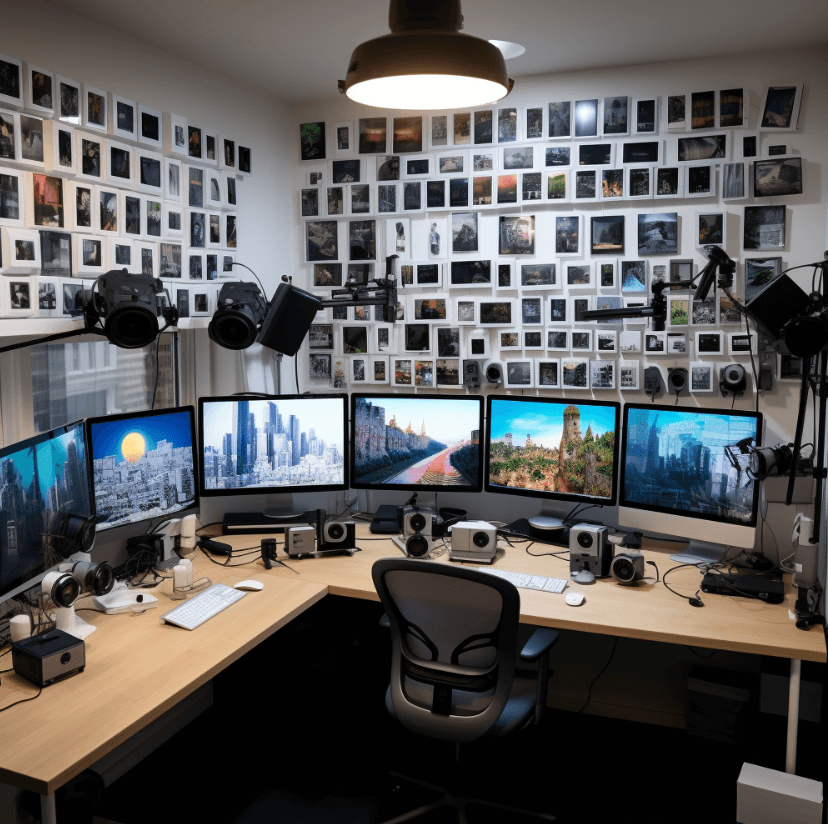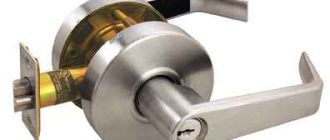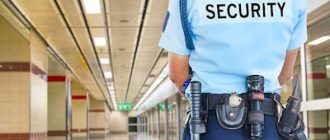
Do You Know How To Install Cameras In The Workspace
Do you know how to install cameras in your workplace? If not, we can teach you. Installing cameras is a crucial step in ensuring the safety and security of your workplace. Whether you own a small business or a large corporation, having cameras installed is essential.
Installing cameras might seem like a daunting task, but with our step-by-step guide, you will learn how to do it properly. We will walk you through the process, from choosing the right location for your cameras, to mounting and wiring them correctly.
Why is it important to install cameras in the workplace? Well, cameras can deter theft and vandalism, protect your employees and assets, and provide valuable evidence in case of incidents. In today’s world, where security is a top concern, having cameras can give you peace of mind.
Don’t wait any longer – learn how to install cameras in your workspace and ensure the safety and security of your business.
“Installing cameras in the workplace is the first step towards a safer and more secure environment.”
Basics of Installing Cameras
When it comes to installing cameras in the workspace, knowing the proper way to do it is crucial. This ensures that you can effectively monitor your surroundings and maintain a secure environment.
Here are some key steps you should follow when installing cameras:
1. Determine the strategic locations: Before you start the installation process, analyze the area and identify the key spots where the cameras should be placed. These spots should cover all necessary angles and provide maximum coverage.
2. Choose the right type of cameras: There are various types of cameras available, so make sure to select the ones that are suitable for your specific needs. Consider factors such as resolution, night vision capabilities, and weatherproofing.
3. Plan the wiring: Decide on the route the camera’s cables will take and plan accordingly. This should be done to avoid any potential damage to the wires and ensure a clean and organized setup.
4. Install the cameras: Once you have determined the locations and planned the wiring, it’s time to install the cameras. Follow the manufacturer’s instructions carefully and use the appropriate tools to securely mount the cameras in place.
5. Test the cameras: After the installation is complete, it’s essential to test the cameras to ensure they are functioning properly. Check the angles, adjust the focus if needed, and verify the clarity of the footage.
6. Set up a monitoring system: To effectively monitor the cameras, you need a reliable monitoring system. This may include software, a dedicated monitor, or even remote access options. Set up this system according to your preferences and needs.
By following these simple steps, you can learn how to install cameras in the workspace effectively. Remember, proper installation plays a crucial role in the overall security and surveillance of your premises.
Understanding the Importance
Cameras are an essential tool to have in any workspace. They provide added security and surveillance, ensuring the safety of employees and valuable assets. By installing cameras in the workspace, you can monitor activities, deter theft and vandalism, and create a safer work environment for everyone.
To know how to install cameras properly, it is important to understand their significance. Here are a few reasons why installing cameras is crucial:
- Enhances security: Installing cameras helps deter potential criminals and intruders. They act as a visual deterrent and provide evidence in case of any security breaches.
- Prevents workplace misconduct: Cameras can help discourage inappropriate behavior in the workplace. Employees are more likely to follow rules and guidelines when they know they are being monitored.
- Increases productivity: Monitoring the activities of employees can help identify any inefficiencies or unproductive behaviors. This information can be used to improve workflows and enhance productivity.
- Provides valuable evidence: In case of any incidents or accidents, cameras can provide clear evidence that can be used for investigations or legal purposes. This evidence can help resolve disputes and protect the interests of the company.
Knowing how to install cameras properly is crucial to ensure they function effectively. It is recommended to seek professional assistance or follow manufacturer’s guidelines to avoid any mistakes or technical issues. Additionally, it is important to consider the privacy of employees and comply with any legal requirements or regulations related to camera installation in the workspace.
In conclusion, understanding the importance of installing cameras in the workspace is essential for maintaining a secure and productive environment. By investing in proper camera installation and knowing how to utilize them effectively, businesses can ensure the safety of their employees and assets, prevent misconduct, and enhance overall productivity.
Assessing the Workspace
Before installing cameras in your workspace, it is important to assess the area thoroughly. By doing so, you will be able to identify the key areas where cameras need to be installed to ensure maximum coverage and security.
Firstly, you need to know the layout of the workspace. Take into consideration the size and shape of the area, as well as any potential blind spots or areas that may require extra surveillance. Understanding the layout will help you determine how many cameras you will need and where they should be placed.
Next, consider the specific threats or risks that your workspace may be exposed to. This could include theft, vandalism, or unauthorized access. By identifying these potential risks, you can strategically position the cameras to address these concerns.
Another important factor to consider is lighting conditions. Assess the lighting in different areas of the workspace to determine if additional lighting sources will be required for camera installation. Proper lighting ensures clear and high-quality footage, making it easier to identify any security breaches or incidents.
Lastly, think about the nature of your business and the activities that take place in the workspace. This will help you determine if there are any specific areas that require closer monitoring. For example, if you handle confidential information or valuable assets, you may want to install cameras in those areas to enhance security.
By assessing the workspace thoroughly, you will have a clear understanding of how cameras should be installed and where they will be most effective. This knowledge will ensure that you can properly secure your workspace and protect your business from potential security threats.
Choosing the Right Cameras
When it comes to installing cameras in the workspace, it’s important to choose the right cameras for your needs. The right cameras will not only provide effective surveillance, but also ensure the safety and security of your employees and assets.
Here are a few factors to consider when choosing the right cameras:
- Resolution: The resolution of the cameras is crucial for capturing clear and detailed footage. Higher resolution cameras are recommended for larger spaces or areas where you need to zoom in on specific details.
- Field of View: The field of view determines the area that the camera can cover. Depending on your workspace layout and surveillance needs, you may need cameras with a wider or narrower field of view.
- Indoor or Outdoor Use: Consider where you will be installing the cameras. If they will be exposed to the elements, such as rain or extreme temperatures, make sure to choose cameras that are designed for outdoor use and are weatherproof.
- Lighting Conditions: Take into account the lighting conditions in your workspace. If you have areas with low light or high contrast, you may want to consider cameras with features like infrared or wide dynamic range to ensure optimal image quality.
- Connectivity: Determine how the cameras will be connected to your surveillance system. Whether you choose wired or wireless cameras, make sure they are compatible with your existing infrastructure.
By considering these factors and understanding your specific surveillance needs, you can choose the right cameras to install in your workspace. Remember, investing in high-quality cameras and proper installation is crucial for maintaining a safe and secure environment.
Preparing the Workspace
Before installing cameras in the workspace, there are several steps you should take to ensure a successful installation:
- Assess the area where you plan to install the cameras. Determine the number of cameras needed and their optimal placement for maximum coverage and effectiveness.
- Clean and declutter the workspace. Remove any unnecessary objects or obstacles that may obstruct the camera’s view or cause interference.
- Identify potential power sources for the cameras. Ensure there are nearby electrical outlets or consider using battery-powered cameras if no power sources are available.
- Check the lighting conditions in the workspace. Ensure there is adequate lighting for clear video capture and consider installing additional lighting if needed.
- Take into account any privacy or legal considerations regarding the placement and use of cameras in the workspace. Familiarize yourself with relevant laws and regulations to avoid any legal issues.
- If necessary, consult with an expert or professional to determine the best camera models, features, and specifications for your specific workspace.
By properly preparing the workspace before installing cameras, you can ensure optimal performance and functionality of your surveillance system.
Clearing Obstacles
When it comes to installing cameras in the workspace, there are often obstacles you need to overcome. Knowing how to clear these obstacles is crucial to ensure that the installation process goes smoothly and efficiently.
First, you need to identify any potential obstructions that may hinder the camera’s field of view. This could include objects such as walls, furniture, or other equipment. By assessing the surroundings and positioning the camera strategically, you can ensure that the camera captures the necessary footage.
Next, you will need to determine the best route for running the camera’s cables. This will depend on the layout of your workspace and the location of power sources. It is important to plan ahead and consider the most direct and discreet path for the cables. This will help to minimize any disruptions or trip hazards.
Another obstacle you may encounter is the need for additional equipment or tools. Depending on the specific camera model and installation requirements, you may need to use items such as mounting brackets, screws, or specialized tools. Be sure to familiarize yourself with the camera’s installation instructions and gather all necessary equipment before starting the installation.
Finally, one of the most important obstacles to overcome is ensuring the camera’s security. It is crucial to secure the camera in a way that prevents unwanted tampering or interference. This can be achieved through methods such as using lockable mounts or positioning the camera out of reach.
In conclusion, knowing how to clear obstacles when installing cameras in the workspace is essential for a successful installation. By considering factors such as obstructions, cable routing, equipment needs, and security, you can ensure that the cameras are installed properly to achieve the desired surveillance coverage.
Identifying Camera Locations
To properly install cameras in the workspace, it is crucial to know where exactly to position them. Effective camera placement can significantly enhance the security of your premises and provide valuable insights into day-to-day operations.
Before installing cameras, it is essential to conduct a thorough assessment of your workspace. Consider areas that require intensive monitoring, such as entrances, exits, high-traffic zones, parking lots, and storage spaces. Each space may require different types of cameras and angles to achieve optimal surveillance.
Start by identifying potential blind spots, where cameras cannot capture the full field of view. These areas can be prone to unauthorized access or criminal activities. By installing cameras strategically in these spots, you can monitor them effectively and deter potential threats.
Another crucial factor to consider is lighting conditions. Ensure the cameras have a clear line of sight, and there are no obstructions that could interfere with their view. Install cameras in well-lit areas or use infrared cameras for low-light conditions.
Furthermore, take into account privacy concerns and legal regulations while positioning cameras. Avoid installing cameras in private areas, such as bathrooms or changing rooms, to respect the privacy of your employees. Familiarize yourself with local laws and restrictions regarding CCTV installation.
Overall, identifying camera locations requires an understanding of your workspace, potential risks, and legal implications. By carefully planning and positioning cameras, you can maximize their effectiveness in ensuring the safety and security of your workplace.
Providing Power and Connectivity
In order to ensure that your cameras function properly and effectively, it is essential to provide them with the necessary power and connectivity. Without reliable power and solid connectivity, your cameras may not be able to transmit footage or may experience disruptions in their functionality.
When installing cameras in the workspace, it is important to consider their power requirements. Depending on the type and model of the camera, you may need to provide them with direct electrical power through a power outlet or a dedicated power source. It is crucial to know the power needs of your cameras and ensure that they are supplied with a constant and sufficient power source.
Additionally, connectivity plays a vital role in the performance of your cameras. You need to ensure that your cameras are connected to the network or a recording device seamlessly in order to enable real-time monitoring and storage of footage. Depending on your setup and requirements, you may need to install additional network cables or set up a wireless connection for your cameras.
To install cameras properly in the workspace, you need to know the best practices for providing power and connectivity. It is advisable to consult with professionals or experts in the field to ensure that your cameras are installed correctly and are functioning optimally. By doing so, you can ensure the smooth operation and effectiveness of your camera system, enhancing the security and surveillance of your workspace.
Mounting the Cameras
When it comes to installing your cameras in the workspace, it is crucial to know how to properly mount them. Mounting the cameras correctly ensures optimal performance and coverage.
First, you need to determine the right locations for your cameras. Consider the areas that require surveillance and the angles you want to capture. Make sure your cameras are positioned to cover the most vulnerable spots.
Next, check for any obstructions that may affect the camera’s field of view. Clear any debris, branches, or objects blocking the line of sight. It is essential to have a clear and unobstructed view to maximize the effectiveness of your cameras.
Before mounting the cameras, ensure that you have all the necessary tools and equipment. You will need a drill, screws, mounting brackets, and a level. Also, double-check that you have all the required cables and connectors.
When mounting the cameras, be sure to follow the manufacturer’s instructions. Use the appropriate mounting brackets and screws to securely attach the cameras to the desired locations. Take your time to ensure they are firmly in place and properly aligned.
Once the cameras are installed, adjust the angle and focus to optimize the view. Test the cameras by reviewing the captured footage and make any necessary adjustments to achieve the desired coverage.
Remember to take into account any legal considerations regarding the placement of cameras in the workplace. Familiarize yourself with the applicable regulations and privacy laws to ensure compliance.
In conclusion, knowing how to mount cameras in the workspace is essential to effectively monitor and secure your environment. Proper installation guarantees clear and comprehensive surveillance coverage, providing peace of mind for you and your employees.
Selecting Mounting Options
To install cameras in the workspace, it is important to know how to select the right mounting options. Selecting the appropriate mounting options is crucial for ensuring optimal camera placement and coverage. There are several factors you should consider when choosing the best mounting option for your camera installation.
1. Location: First and foremost, consider where you want to install the cameras. Are you looking to monitor a specific area or cover a larger space? Understanding the location and its specific needs will help you determine the best mounting options.
2. Type of Camera: Different cameras may require different mounting options. Consider the type of camera you have or plan to install. Dome cameras, for example, are often ceiling-mounted, while bullet cameras are commonly wall-mounted. Understanding the type of camera will guide you in selecting the appropriate mounting option.
3. Mounting Styles: There are various mounting styles available to choose from, such as wall-mount, ceiling-mount, pole-mount, or corner-mount. Each style has its own advantages and considerations. Determine which mounting style will provide the best viewing angle and coverage for your specific needs.
4. Adjustability: Depending on your requirements, you may need a mounting option that offers adjustability. Consider whether you need pan, tilt, or zoom capabilities to customize the camera’s viewing angle. Flexibility and adjustability are important factors to consider when selecting a mounting option.
5. Security: Safety and security are paramount. Choose a mounting option that ensures the camera is securely installed and protected against tampering or theft. Look for features such as tamper-resistant screws or vandal-proof casings to enhance the camera’s security.
By considering these factors, you can make an informed decision when selecting mounting options for your camera installation. Remember to consult the camera manufacturer’s guidelines and specifications for specific mounting requirements and recommendations.
Tools Required
To properly install cameras in the workspace, there are several tools you will need to have on hand. These tools will allow you to effectively and efficiently install the cameras and ensure they are securely positioned for maximum coverage and effectiveness.
Here are the essential tools you will need:
| 1. Power drill | A power drill is necessary for creating holes in the walls or ceilings to mount the cameras. Make sure to have the appropriate drill bits for the type of wall or surface you will be working with. |
| 2. Screwdriver | A screwdriver will be used to secure the cameras in place after drilling the holes. Choose a screwdriver that is compatible with the screws provided with the cameras. |
| 3. Level | A level will ensure that the cameras are installed straight and aligned properly. This is crucial for accurate surveillance and capturing clear footage. |
| 4. Tape measure | A tape measure will help you determine the correct distance and angle for installing the cameras. This will ensure optimal coverage and minimize blind spots. |
| 5. Ladder | If the installation requires mounting cameras at a greater height, a ladder will be necessary to reach those areas safely. Make sure to choose a ladder that is sturdy and appropriate for the task. |
| 6. Cable management tools | Proper cable management is essential to ensure a clean and professional installation. Cable clips, ties, and conduits will help you organize and secure the video cables neatly. |
Having these tools will make the installation process much smoother and will ensure that your cameras are installed correctly and provide the desired level of surveillance for your workspace.
Properly Positioning the Cameras
Positioning the cameras correctly is crucial to ensure optimal surveillance in the workspace. Knowing how to properly install and position the cameras is imperative for effective monitoring of the area.
Here are some key considerations to keep in mind when positioning the cameras:
- Identify the strategic locations where the cameras will be installed. These areas should provide a clear view of the entire workspace and any potential points of entry.
- Determine the appropriate height for the cameras. Typically, cameras should be positioned at a height of around 8 to 10 feet to achieve an optimal viewing angle.
- Ensure that the cameras are installed securely and are not easily accessible to unauthorized individuals. This will help prevent tampering or damage to the surveillance system.
- Consider the lighting conditions of the workspace. Cameras should be positioned in such a way that they are not affected by harsh lighting or glare, which can degrade the image quality.
- Adjust the camera angle and focus to capture the desired areas of interest. This may require some fine-tuning to ensure that all critical areas are covered effectively.
By following these guidelines, you can ensure that your cameras are properly positioned and installed to provide comprehensive surveillance coverage in the workspace.
Installing Camera Software
To ensure proper functionality of your camera system, it is important to know how to install the camera software. By following the steps below, you will be able to easily set up your cameras and begin monitoring your workspace.
1. Connect the camera to your computer using the provided USB cable. Make sure the camera is turned on.
2. Access the camera software by clicking on the designated icon on your desktop. If you don’t have the software installed, you can download it from the manufacturer’s website.
3. Once the software is open, you can either choose to set up a new camera or connect to an existing camera system. If this is your first time installing cameras, select the “New Camera” option.
4. Follow the on-screen instructions to complete the camera installation process. This may include providing necessary network settings, configuring camera preferences, and creating a username and password for camera access.
5. After successfully installing the camera software, you will be able to view and manage all connected cameras on the main screen. From here, you can adjust camera angles, set recording schedules, and customize camera settings to meet your specific needs.
Now that you know how to install camera software, you can easily set up and manage your camera system in the workspace. Enjoy peace of mind knowing that your cameras are providing enhanced security and surveillance.
BenefitsFeaturesInstallation
| Improved security | High-definition video | Easy setup process |
| Enhanced surveillance | Remote monitoring | Customizable settings |
| Peace of mind | Motion detection | 24/7 recording |
Downloading the Software
Once you know how to install cameras in the workspace, the next step is to download the necessary software. Here’s what you need to do:
- Visit the official website of the camera manufacturer.
- Navigate to the Downloads section of the website.
- Look for the software that corresponds to your camera model and operating system.
- Click on the download link.
- Follow the on-screen prompts to save the software to your computer.
Downloading the software is an essential step in setting up your cameras properly. It allows you to access advanced features, adjust settings, and view the camera feed on your computer or smartphone.
Remember to always download software from trusted sources to ensure the security and functionality of your camera system.
Configuring Cameras
Once you know how to properly install cameras in your workspace, you need to understand how to configure them to ensure optimal performance. In order to do this, you will need to have a strong understanding of the camera’s settings and features.
First, you need to access the camera’s configuration menu. This can usually be done by connecting to the camera’s IP address using a web browser. Once you have accessed the menu, you will be able to adjust various settings such as resolution, frame rate, and compression type.
It’s important to know what each setting does so you can customize the camera to fit your specific needs. For example, adjusting the resolution will determine the quality of the video footage captured by the camera. Higher resolution settings will result in clearer images, but will also require more storage space.
Another important setting to consider is the frame rate. The frame rate determines how many frames per second the camera captures. A higher frame rate will result in smoother video playback, but will also require more bandwidth and storage space.
Additionally, you may need to configure other settings such as motion detection, privacy masking, and night vision. Motion detection can be set to trigger the recording and alerting capabilities of the camera whenever motion is detected in the frame. Privacy masking allows you to block out certain areas of the image to protect sensitive information. Night vision settings can be adjusted to ensure clear video footage in low light conditions.
Once you have configured the cameras to your desired settings, it’s important to periodically check and adjust them as needed. This will help ensure that you are getting the most out of your surveillance system and that it continues to function properly.
SettingDescription
| Resolution | Determines the quality of the video footage captured by the camera. |
| Frame Rate | Determines how many frames per second the camera captures. |
| Motion Detection | Triggers the recording and alerting capabilities of the camera whenever motion is detected. |
| Privacy Masking | Allows you to block out certain areas of the image to protect sensitive information. |
| Night Vision | Adjusts settings to ensure clear video footage in low light conditions. |
By understanding and properly configuring these camera settings, you can ensure that your surveillance system is functioning at its best and providing you with the necessary security and peace of mind in your workspace.
Q&A:
What is the purpose of installing cameras in the workspace?
The purpose of installing cameras in the workspace is to increase security and monitor employee activities.
What are the benefits of having cameras in the workplace?
Having cameras in the workplace provides several benefits. They help prevent theft and vandalism, promote employee as well as customer safety, and can serve as evidence in case of any disputes or incidents.
How can I ensure that the cameras are installed properly?
To ensure proper installation of cameras, it is recommended to hire a professional technician who is experienced in surveillance system setup. They will be able to determine the best locations for cameras, ensure a secure connection, and provide guidance on camera settings and access control.
What are some important factors to consider when installing cameras in the workplace?
When installing cameras in the workplace, it is important to consider the specific security needs of the business, the layout and size of the workspace, lighting conditions, privacy laws and regulations, and the type of cameras and equipment required for monitoring.
Can I install cameras in employee-only areas?
Yes, you can install cameras in employee-only areas, but it is important to clearly communicate this to your employees and obtain their consent. Additionally, it is recommended to consult with legal experts to ensure compliance with privacy laws and regulations.
What is this product about?
This product offers guidance on how to properly install cameras in the workspace to ensure optimal security and surveillance.






